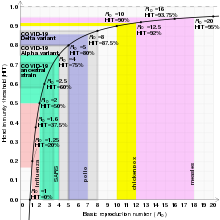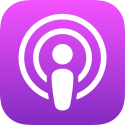| Network science | ||||
|---|---|---|---|---|
| Network types | ||||
| Graphs | ||||
|
||||
| Models | ||||
|
||||
|
Lists Categories | ||||
As part of network science, the study of quantum complex networks aims to explore the impact of complexity science and network architectures in quantum systems. According to quantum information theory, it is possible to improve communication security and data transfer rates by taking advantage of quantum mechanics. In this context, the study of quantum complex networks is motivated by the possibility of quantum communications being used on an enterprise scale in the future. In this case, it is likely that quantum communication networks will acquire nontrivial features, as is common in existing communication networks today.
Motivation
In theory, it is possible to take advantage of quantum mechanics to create secure and faster communications. For example, quantum key distribution is an application of quantum cryptography that enables secure communications, and quantum teleportation can be used to transfer data at a higher rate than one can using only classical channels.
Successful quantum teleportation experiments in 1998, followed by the development of the first quantum communication networks in 2004, open the possibility of quantum communication being used on a large scale in the future. According to findings in network science, network topology is extremely important in many cases, and existing large scale communication networks tend to have non-trivial topologies and characteristics, such as small world effect, community structure, or being a scale-free network. The study of networks with quantum properties and complex network topologies can help us to not only better understand such networks but also use the network topology to improve the efficiency of communication networks in the future.
Important concepts
Qubits
In quantum information theory, qubits are analogous to bits in classical systems. A qubit is a quantum object that, when measured, can be found to be in one of only two states, and that is used to transmit information. Photon polarization or nuclear spin are examples of two-state systems that can be used as qubits.
Entanglement
Quantum entanglement is a physical phenomenon characterized by correlation between the quantum states of two or more particles. While entangled particles do not interact in the classical sense, the quantum state of such particles cannot be described independently due to their entanglement. Particles can be entangled in many ways. The maximally entangled states are the ones that maximize the entropy of entanglement. In the context of quantum communication, entangled qubits are used as a quantum channel, which is capable of transmitting information when combined with a classical channel.
Bell measurement
Bell measurement is a kind of joint quantum-mechanical measurement of two qubits such that, after the measurement, the two qubits will be maximally entangled.
Entanglement swapping
Entanglement swapping is a frequently used strategy used in the study of quantum networks that allows connections in the network to change. For example, suppose that we have 4 qubits, A, B, C and D, such that qubits C and D belong to the same station, while A and C belong to two different stations, and where qubit A is entangled with qubit C and qubit B is entangled with qubit D. By performing a Bell measurement for qubits A and B, not only will qubits A and B be entangled, but it is also possible to entangle qubits C and D, despite the fact that these two qubits never interacted directly with each other. Following this process, the entanglement between qubits A and C, and qubits B and D will be lost. This strategy can be used to shape connections on the network.
Network structure
While not all models for quantum complex networks follow exactly the same structure, usually, in such models, a node represents a set of qubits in the same station (where operations like Bell measurements and entanglement swapping can be applied) and an edge between node and means that a qubit in node is entangled to a qubit in node , although those two qubits are in different places and so cannot physically interact. Quantum networks where the links are interaction terms instead of entanglement may also be considered but for very different purposes.
Notation
Each node in the network contains a set of qubits that can be in different states. To represent the quantum state of these qubits, it is convenient to use Dirac notation and represent the two possible states of each qubit as and . In this notation, two particles are entangled if the joint wave function, , cannot be decomposed as
where represents the quantum state of the qubit at node i and represents the quantum state of the qubit at node j.
Another important concept is maximally entangled states. The four states (the Bell states) that maximize the entropy of entanglement between two qubits can be written as follows:
Models
Quantum random networks
The quantum random network model proposed by Perseguers et al. (2009) can be thought of as a quantum version of the Erdős–Rényi model. In this model, each node contains qubits, one for each other node. The degree of entanglement between a pair of nodes, represented by , plays a similar role to the parameter in the Erdős–Rényi model: in the Erdős–Rényi model, two nodes form a connection with probability , whereas in the context of quantum random networks, refers to the probability of an entangled pair of qubits being successfully converted to a maximally entangled state using only local operations and classical communication.
Using the Dirac notation introduced previously, we can represent a pair of entangled qubits connecting the nodes and as
For , the two qubits are not entangled:
and for , we obtain the maximally entangled state:
- .
For intermediate values of , , any entangled state is, with probability , successfully converted to the maximally entangled state using LOCC operations.
One feature that distinguishes this model from its classical analogue is the fact that, in quantum random networks, links are only truly established after measurements in the networks being made, and it is possible to take advantage of this fact to shape the final state of the network. For an initial quantum complex network with an infinite number of nodes, Perseguers et al. showed that, by doing the right measurements and entanglement swapping, it is possible to collapse the initial network to a network containing any finite subgraph, provided that scales with as , where . This result is contrary to what we find in classical graph theory, where the type of subgraphs contained in a network is bounded by the value of .
Entanglement percolation
The goal of entanglement percolation models is to determine if a quantum network is capable of establishing a connection between two arbitrary nodes through entanglement, and to find the best strategies to create such connections.
In a model proposed by Cirac et al. (2007) and applied to complex networks by Cuquet et al. (2009), nodes are distributed in a lattice or in a complex network, and each pair of neighbors share two pairs of entangled qubits that can be converted to a maximally entangled qubit pair with probability . We can think of maximally entangled qubits as the true links between nodes. In classical percolation theory, with a probability of two nodes being connected, there is a critical value of (denoted by ), so that if there is a finite probability of a path between two randomly selected nodes existing, and for the probability of such a path existing is asymptotically zero. depends only on the topology of the network.
A similar phenomenon was found in the model proposed by Cirac et al. (2007), where the probability of forming a maximally entangled state between two randomly selected nodes is zero if and finite if . The main difference between classical and entangled percolation is that, in quantum networks, it is possible to change the links in the network, in a way changing the effective topology of the network. As a result, depends on the strategy one uses to convert partially entangled qubits to maximally connected qubits. With a naïve approach, for a quantum network is equal to for a classic network with the same topology. Nevertheless, it was shown that is possible to take advantage of quantum swapping to lower both in regular lattices and complex networks.












































![{\displaystyle R_{0}={\frac {N}{S}}={\frac {\mu N\operatorname {E} (T_{L})}{\mu N\operatorname {E} [\min(T_{L},T_{S})]}}={\frac {\operatorname {E} (T_{L})}{\operatorname {E} [\min(T_{L},T_{S})]}},}](https://wikimedia.org/api/rest_v1/media/math/render/svg/bfedf01ca9b6742ed336fc18d22c1fe3025e83bd)


![{\displaystyle {\begin{aligned}&R_{0}\cdot (1-q)=1,\\[6pt]&1-q={\frac {1}{R_{0}}},\\[6pt]&q=1-{\frac {1}{R_{0}}}.\end{aligned}}}](https://wikimedia.org/api/rest_v1/media/math/render/svg/c3e9c4b64bf2994d62ebaae1f24c481da90d3e47)












